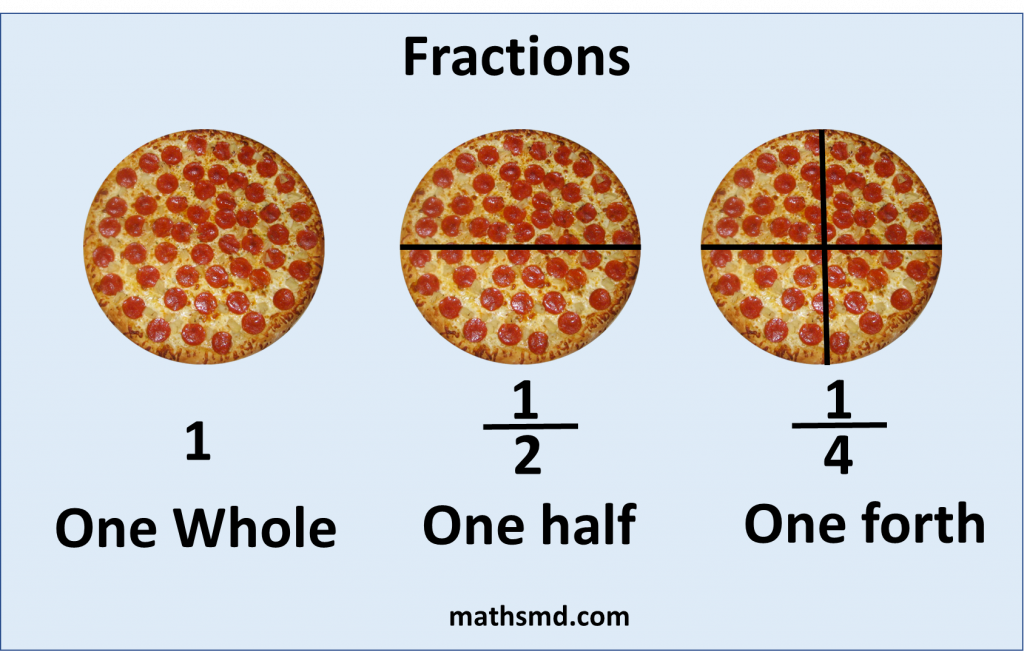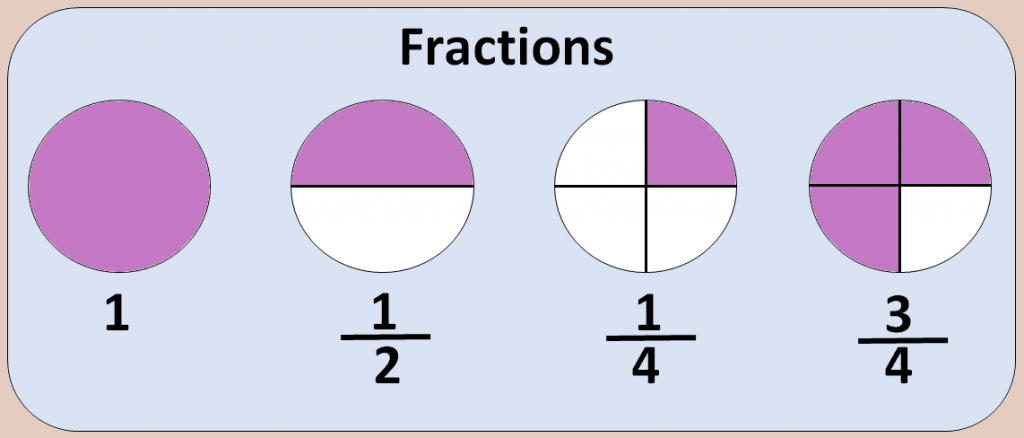Fraction – Definition – Types – Examples
Fraction – Introduction
Definition:
In mathematics, A fraction is a numerical value, that represents a part of a whole.
When an object or group of objects is divided into equal parts, then each individual part is a fraction.
A fraction can be a portion of any quantity out of the whole and whole can be any number, a specific value or a object or group of objects.
A Fraction is a part of a whole.
Let understand this concept with an example. The following figure shows three pizzas. A whole pizza and a pizza that is divided into 2 equal parts. So each part is one half, and a pizza that is divided into 4 equal parts. So each part is one forth.

Fraction Notation
It is divided into a numerator and denominator.
In fraction, the number above of the horizontal line is called the numerator.
Numerator is the number of equal parts that are taken out.
The number below of the horizontal line is called the denominator.
Denominator shows the total number of equal parts into which the whole is divided.
3/4 is a fraction. We read it as “Three fourths”.
3 is the top number and 4 is the bottom number.
The top number 3 is known as the “Numerator” and the bottom number 4 is known as the “Denominator”.
“3” is the number of parts we have.
“4” is the number of equal parts into which the whole has been divided.
A fraction is written as 2/3, 4/5, 5/2, 7/15 and so on.
Example: In a fraction x/y we call ‘x’ as numerator and ‘y’ as a denominator.

Types of Fractions
Numerator and denominator are parts of a fraction.
There are different types of fractions as listed below.
Proper Fraction
Improper Fraction
Unit Fraction
Mixed Fraction
Equivalent Fraction
Like Fraction
Unlike Fraction
Common Fraction